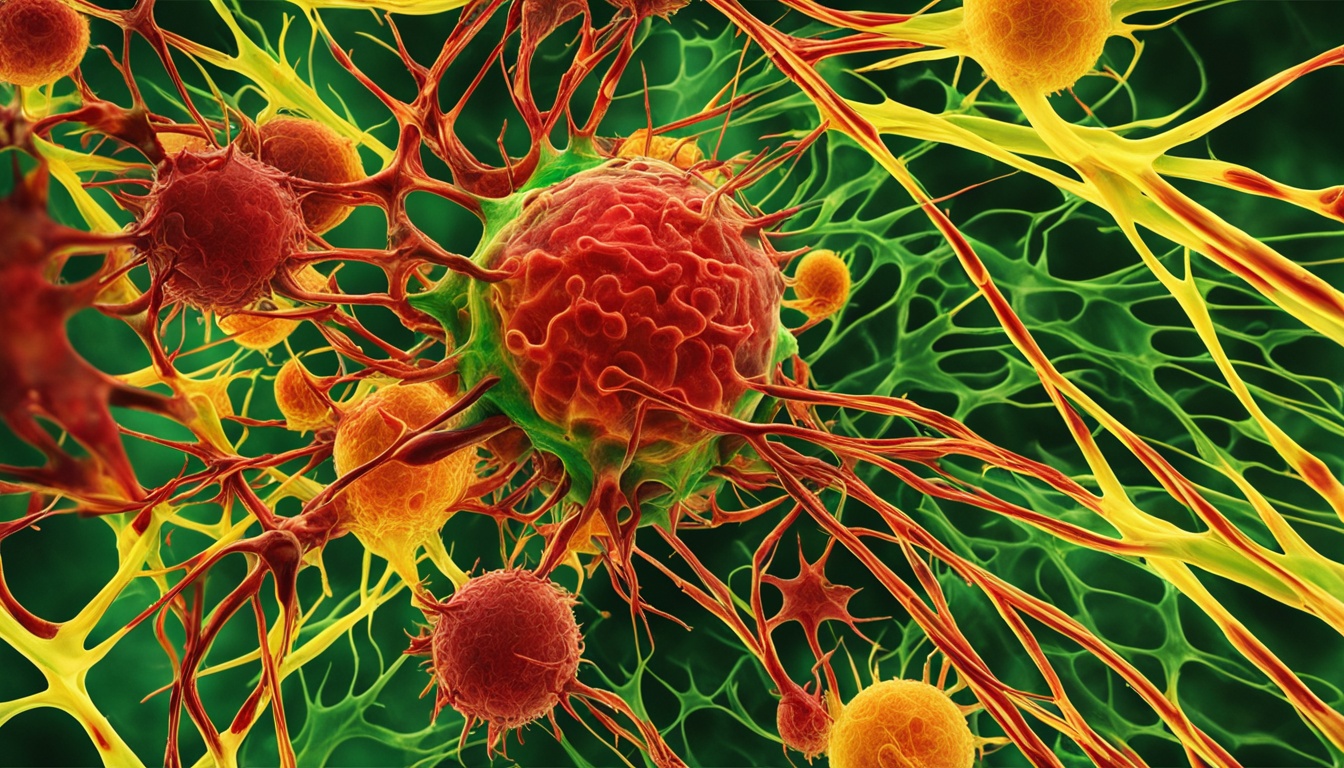Dengue hemorrhagic fever is a quickly spreading disease caused by the dengue virus. It’s a big concern for public health, especially in warm areas. The sickness can be mild or very severe, leading to dangerous conditions.
Its symptoms are a high fever that doesn’t stop, bleeding, and fluid loss from blood vessels. The virus spreads with mosquito bites, usually by mosquitoes like Aedes aegypti and Aedes albopictus. When someone is infected, they might get sick like with the flu. They could have a fever, headache, pain in their joints and muscles, a rash, and feel sick to their stomach.
There isn’t a known cure for dengue fever yet. But, scientists are looking into new ways to help, like using stem cells. Stem cells can turn into many types of cells. They can help repair tissue, control how much fluid leaks from blood vessels, and lower inflammation by releasing certain factors.
Key Takeaways:
- Dengue hemorrhagic fever is a global public health concern.
- The disease ranges from mild to severe and can manifest as dengue hemorrhagic fever and dengue shock syndrome.
- Symptoms include continuous high fever, hemorrhage, and plasma leakage shocks.
- Stem cell therapy shows promise in improving liver functions and repairing damaged tissues.
- Stem cells can differentiate into target cells, promote repair and regeneration, and regulate inflammatory reactions.
Epidemiology and Global Burden of Dengue Hemorrhagic Fever
Dengue hemorrhagic fever (DHF) is a serious global health issue, affecting around 390 million people each year. It is mainly found in warm areas like the Americas, Asia, and Africa. Its cases and deaths have been on the rise for the last two decades.
This disease spreads because of globalization, more people living in cities, changing climates, poor sanitation, and not enough control of the mosquitoes that carry the virus. Because of these reasons, dengue is now everywhere, but the numbers of people affected differ from place to place.
Keeping a close watch on dengue and acting quickly is very important. The high number of cases shows we need better ways to deal with the disease. By learning more about where dengue is and how it spreads, we can stop it from affecting so many people.
Epidemiological Data on Dengue Hemorrhagic Fever
Knowing about dengue is vital for stopping its spread. This table shows dengue rates in certain countries:
| Country | Dengue Incidence |
|---|---|
| Thailand | High |
| Brazil | High |
| India | Moderate |
| Mexico | Moderate |
| Kenya | Low |
The table reveals how dengue’s spread varies by country. It tells us that efforts to stop dengue should change based on where the disease is most common.
To fight dengue, we need to use many strategies. These include watching for new cases, telling the public about preventing bites, getting rid of mosquitoes, and giving vaccines where they can help. If we work together, we can lower dengue’s impact and keep many people safe.
Challenges and Future Directions in Managing Dengue Hemorrhagic Fever
Controlling dengue hemorrhagic fever is hard due to many obstacles. A big one is the difficulty in diagnosing dengue. Many places don’t have enough labs to test for it accurately. This makes spotting new cases and tracking the virus slow.
Another issue is keeping an eye on how the disease spreads. There aren’t enough resources to track it well. Without good data, figuring out how much of a problem dengue is in different places is tough. This makes it hard to plan how to stop it spreading.
Places like Ethiopia are struggling with dengue because they lack medical experts and labs. This makes fighting the disease even harder. It’s important to boost lab capabilities and teach healthcare workers more about diagnosing and watching for dengue.
Creating a strong system to watch for dengue across different areas is key. This way, if there’s an outbreak, it’s caught early. This would help to stop the disease before it harms more people.
When it comes to beating dengue, we need new ways to test for and treat it. One exciting area is looking into how using stem cells might help. Investing in this kind of innovation could make a huge difference in how well we can fight dengue in the future.
By facing these problems directly and coming up with smart solutions, we can make progress. Working together, we might just lower the impact of dengue fever and stop it from spreading further.

